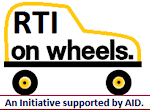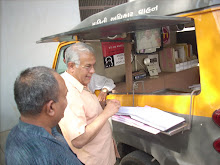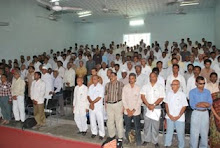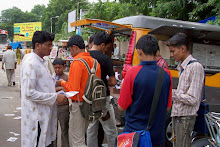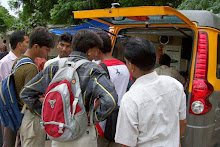WTD
(blog): National: Thursday, September 27, 2018.
One
of India’s most landmark legislation, the Right to Information (RTI) Act, has
caused a marked change in the country in its 13 years of existence. The RTI Act
meant to bring transparency and accountability in government functioning, gives
citizens the right to demand any information regarding governance. In the past
13 years, over 2.5 crore applications were filed, making the Act an
instrumental tool in exposing scams in India.
Adarsh
Society Scam
Adarsh
Housing Society, a 31-storey upscale residential complex in Colaba, Mumbai,
should have originally housed war heroes and war widows who lost their spouses
during the 1999 Kargil War. But the occupants of the apartment complex built on
defence land ended up being bureaucrats and relatives of politicians who were
in no way connected with the Kargil war.
For
years, the flats stayed with high profilers including family of the then Chief
Minister Ashok Chavan. This is why, little enquiry was launched into the
residents of the society, as politicians used their clout to keep the scam
under covers.
Then,
in 2008, two RTI activists, Yogacharya Anandji and Simpreet Singh, filed RTI
applications, which found that the land on which the building was built was
owned by the Defense Ministry and not by the Government of India, prompting the
Army and the CBI to launch separate probes into the matter.
What,
at first, appeared as a misuse of granted land, turned murkier as the
revelations of the probe grew. It was found that the 100-metre tall project had
not obtained the necessary clearances (NOC) to build a high-rise in an army
area and a Coastal Regulation Zone. The society only had permission to
construct up to 6 floors, but benumb transactions were done to forge NOC
certificates. The case finally went to Bombay high court which ordered the
demolition of the building.
While
the scam was going on since 2003, it only came under public ire after the RTI
report reached the media and the latter covered the issue extensively. All
investigations and court cases were fast tracked and resulted in the
resignation of Chavan as CM in 2010.
Coal
Allocation Scam
Between
2004 and 2009, the Government of India allocated 194 blocks of coal to various
public and private companies at prices lower than real value. Ideally, the process of coal allocation is such that it
invites proposals/tenders from companies. And then an auction is held through
which the most competitive buyer is allocated the coal block. But instead the
UPA government sold off the blocks to big companies (Jindal group, Essar Group,
Laxmi Mittal) who gave the former more commission. Due to this the government
lost Rs. 1.86 lakh crore in revenue while the companies’ profits soared.
In
2007, lawyer Sudeep Shrivastava filed an RTI application demanding details of
how and to whom coal blocks had been allotted. However, nothing came out of the
RTI because the Information Commission permitted the Coal Ministry to withhold
such information under “security pretexts”. This came as an absurd excuse and
raised a lot of questions through the media – which then termed it the Coalgate
scandal.
Finally,
the case reached the CBI and several coal blocks formerly given to private
companies were deallocated. It led to the arrest of nine key players in the
Coalgate scam – former Jharkhand CM Madhu Koda, former Coal Secretary HC Gupta,
order Jharkhand Chief Secretary AK Basu, chartered accountant Navin Kumar
Tulsyan, and some other small time government servants.
The
RTI application marked the start of the unravelling of the Coalgate scam which
had been playing for over 10 years. It is only when the IC suspiciously covered
the Coal Ministry’s actions, did the media take the issue to grand scale
prompting
2G
Spectrum Scam
Just
like the Coalgate scam, in this one too 2G spectrum licenses were illegally
allocated to telecom companies at throwaway prices. Politicians and government
officials did so in exchange for a hefty bribe. The multi-crore scam brought a
loss of approximately Rs 1.76 lakh crores to the government.
An
RTI application filed by activist Subhash Chandra Agrawal found that the
Telecom Minister – A. Raja, External Affairs Minister – Pranab Mukherjee and
Solicitor General – G. E. Vahanvati held a suspicious and secret meeting
regarding the 2G allocation in 2007. Another RTI application filed by activist
Vivek Garg in 2011 led to a note from the Finance Ministry that said that the
spectrum could have been auctioned for more than what Finance Minister P.
Chidambaram had insisted.
The
CAG (Comptroller and Auditor General) found that licenses had been issued to
ineligible applicants who had deliberately suppressed facts, disclosed
incomplete information and submitted fictitious documents. These faux companies
then in turn sold the licenses to various other Indian/foreign companies at
high premium within a short period of time.
Although
the RTIs did not directly expose the scam, they did help uncover the
involvement of many high-level officials. They promoted a probe into the issue
which led to the CBI filing an 80,000 page chargesheet in the trial court.
Commonwealth
Games Scam
A
major scam hit Delhi in 2010, when India was chosen to host the Commonwealth
Games (CWG). An RTI application filed by the Housing and Land Rights Network
revealed that the Delhi government had diverted Rs. 744 crore for economic
development and social welfare of Scheduled Castes to various CWG projects. It
also found that a lot of these CWG projects only existed on paper and were
never implemented. In fact, Suresh Kalmadi, the Chairman of the Organising
Committee of the Games signed a contract of Rs 141 crore to Swiss Timings for
its timing equipment, whereas the real cost of the equipment was about about Rs
95 crore lesser.
As
a result of these RTIs, the Enforcement Directorate (ED) in Delhi started
probing the issue. The ED found that only half of the total funds allotted for
the CWG were spent on Indian sportsmen. The athletes were allegedly asked to
shift to shabby apartments and use substandard equipment for practice.
The
RTIs not only brought the existence of the scam to the limelight but also
revealed controversial detailed that ensured fast investigations by the ED and
the CBI.
Vyapam
Scam
The
state level entrance exams (Medical and Engineering) in Madhya Pradesh are
conducted by a Vyavsayik Pariksha Mandal (Vyapam). which is an autonomous body. The Vyapam scam
was an entrance examination, admission & recruitment scam in Madhya Pradesh
in 2013. It involved several politicians, government officials and businessmen
who manipulates exam hall seating arrangements, supplied forged answer sheets
to students and hired imposters to write exam papers.
Since
the 1990s, there had been several cases where candidates were found to have
paid politicians and the Vyapam officials bribes to get higher ranks in exams
than they deserved. Here’s how that worked. The undeserving candidates would
leave their OMR answer sheets blank or fill in only the answers they were sure
about. The corrupt board officials would manipulate records to give these
candidates high percentages.
But
the sheer scale of the scam came to light in 2013, when several whistleblowers
(Prashant Pandey, Ashish Chaturvedi, Dr Anand Rai) and an activist Ajay Dubey’s
RTI led to the arrest of 20 people in Indore who had impersonated
candidates in a 2009 exam. Dr Anand Rai single handedly investigated the case
by finding exam papers and cash in Jagdish Sarkar’s (leader of the racket)
office. He then filed an FIR and RTI application which led to Sarkar’s arrest.
In
each of these scams, RTIs have in some way either unearthed the racket or at least prompted investigation and media
coverage that led to the blow up.




